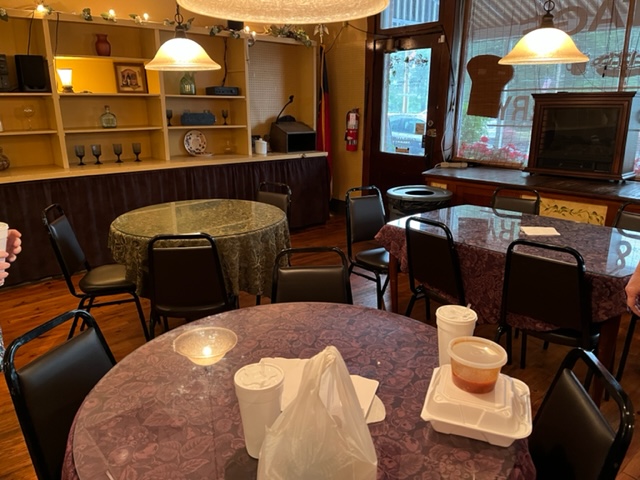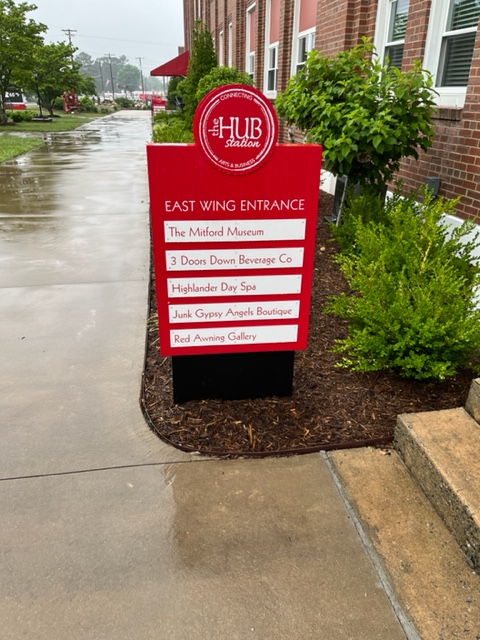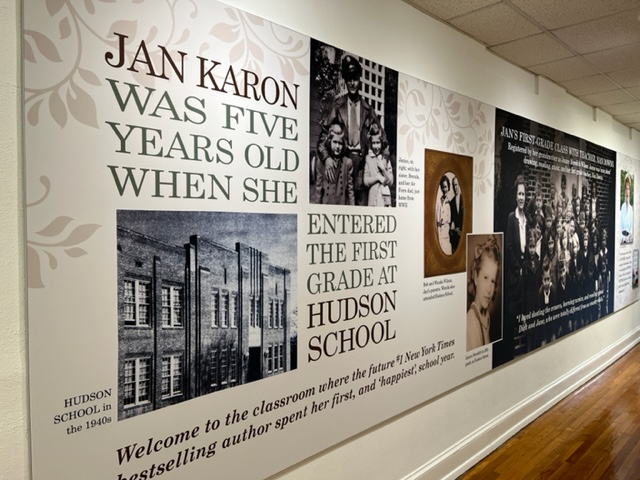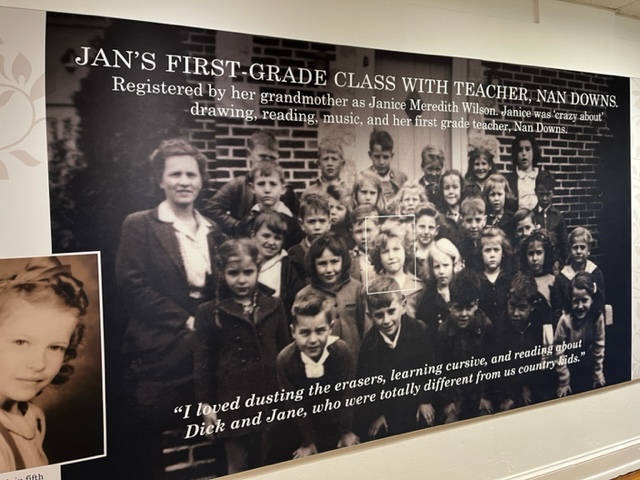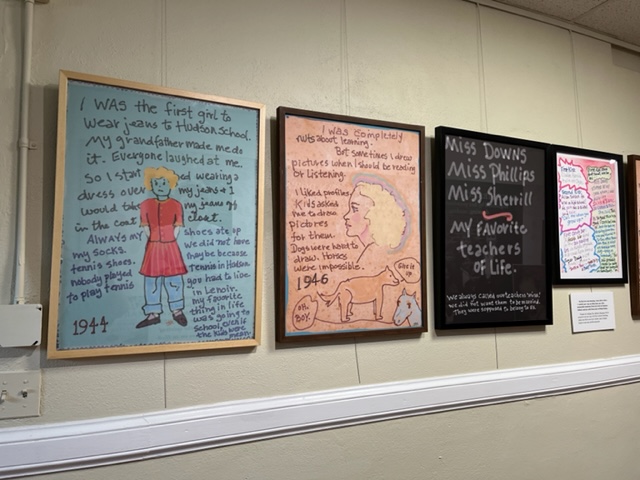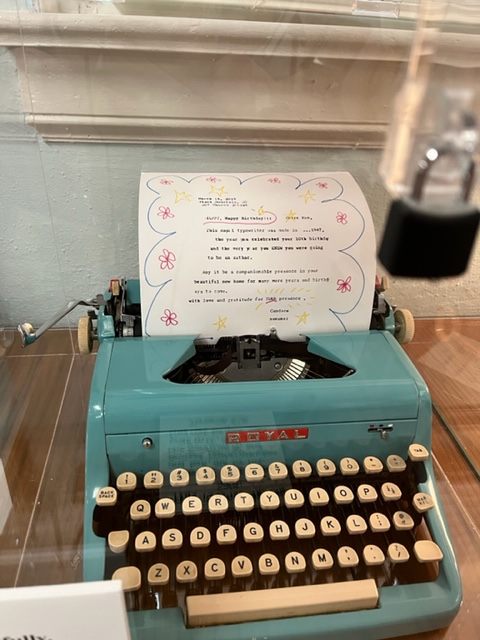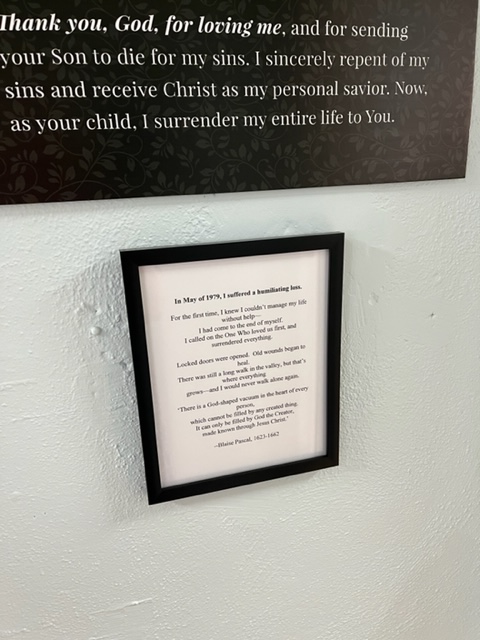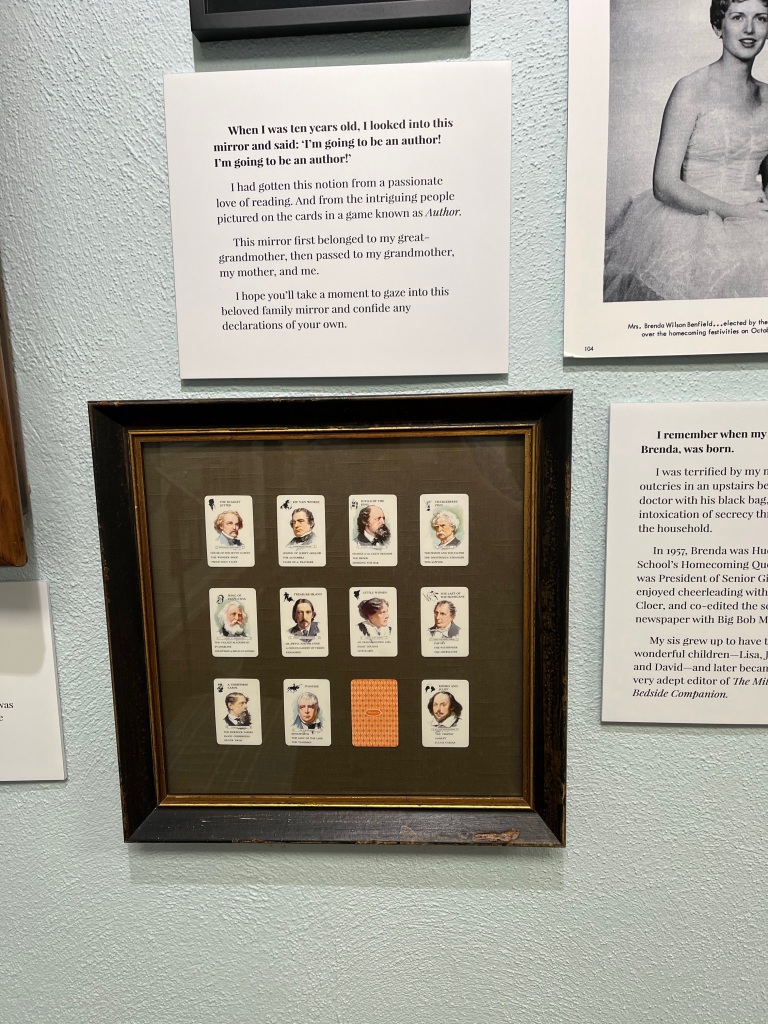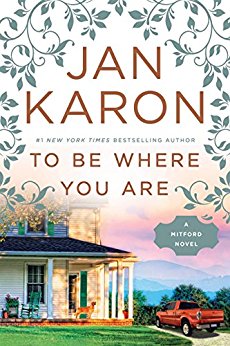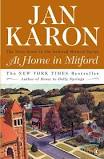Last December I reread, or rather, listened to a book I had previously read: At Home In Mitford by Jan Karon. I reviewed it here and then set off to listen to audiobook versions of the whole series. I found I wasn’t necessarily inclined to write a review of each one, though, I suppose because although there are movements of plot in each book, the overall people and themes are the same. So I decided at the end of the series I’d write one post summarizing each one.
I wrote previously that “I first encountered Jan Karon in the pages of Victoria magazine some years ago. Victoria chooses a “Writer-in-residence” whose work they showcase in each issue throughout the year, and Jan was featured one year. I loved her warmth and hominess and clear faith depicted — in fact, I was surprised and pleased that a secular magazine would feature a writer whose faith was integral to her stories. I believe it was there I also first heard of and then sought out Mitford.”
The series mainly follows the life of Father Tim Kavanagh, a sixty-something Episcopal priest, and the various characters in the fictional small town of Mitford, NC. Father Tim is a hard-working single priest, but in the first book an appealing single lady moves in next door, and though he thought he was a confirmed bachelor, he finds himself entranced but not sure what to do about it.
His flock consists of a number of memorable characters: his sometimes annoying secretary, Emma: Miss Sadie Baxter, town matriarch; LouElla, her companion; Uncle Billy Watson, resident joke-teller, perhaps to take the edge off of living with his wife of several decades, Miss Rose, who is schizophrenic but refuses to take her medicine; Esther Bolick, who expresses her love via her famed Orange Marmalade Cake; the “Turkey Club” he eats lunch with regularly at Percy Mosely’s Main Street Grill, the “man in the attic” (one of my favorite story lines), and a host of others.
Mitford is a typical small town where everyone knows everyone’s business, which can be a thorn in the flesh occasionally, but overall everyone genuinely cares. I think of it as something like Mayberry but not as corny. 🙂 Though every book contains some of the same familiar, comforting elements, the lives of the characters do progress: people fall in love, marry, babies are born, people face crises and grow and some die. Father Tim himself progresses over the series and deals with a couple of lifelong issues; his wife Cynthia is a bright spot in his life and helps him become less staid and more sure of himself.
The Mitford books were not marketed as Christian fiction that I remember, but there are ample amounts of Biblical truth and pure gospel woven in naturally.
So here are brief descriptions of each book in the series:
At Home in Mitford (reviewed here): Father Tim, the town, and its characters are introduced; a dog “as big as a Buick” finds and “adopts” Father Tim and becomes a pleasant companion; new neighbor Cynthia moves in next door; neglected orphan Dooley Barlow enters Father Tim’s previously quiet life.
A Light in the Window, reviewed here: Father Tim and Cynthia become more serious while a widow in town also sets her cap for Father Tim and he doubts whether he can give himself in marriage as he should; Miss Sadie takes an interest in helping Dooley, who is now living with Father Tim, by wanting to send him to a prep school out of town; the Main Street Grill is in danger of being closed; a very abrasive, rough around the edges construction supervisor, Buck Leeper, is in charge of the nursing home being built with Miss Sadie’s donated money.
A Common Life: The Wedding Story, not reviewed, was not published until after the next three books had been written, but fits in here in the story line. It is Father Tim and Cynthia’s wedding story, both sweet and comical.
These High Green Hills, not reviewed: Father Tim adjusts to marriage; a severely abused child ends up at Father Tim’s door; an unidentified burn victim is brought to the hospital; Dooley’s mother is found; a long-time Mitford resident dies.
Out to Canaan, not reviewed: Father Tim contemplates and prepares for retirement; Mayor Cunningham faces an unlikely opponent; a mysterious Florida corporation is trying to buy up Mitford property, including Miss Sadie’s Fernbank.
A New Song, not reviewed: Father Tim supplies a pulpit as an interim in Whitecap, an island on the NC coast, gets a disturbing phone call about Dooley back in Mitford, discovers a mysterious neighbor, and performs an unusual wedding.
In This Mountain, not reviewed: Father Tim deals with retirement and wonders what his life has been worth while his wife’s fame as an author and illustrator soars to new heights; neglect of his diabetes causes a major breakdown; a serious accident plunges Father Tim into a season of depression. Though this is a bit darker than the other books, it was still a very good read.
Shepherds Abiding, not reviewed: a lovely Christmas story dealing with many aspects of the season; Father Tim, who has worked with his mind most of his life, discovers the pleasure of working with his hands by restoring an old Nativity scene in a state of disrepair as a Christmas gift for his wife; bookstore owner Hope Winchester may have to close down and move, but then the possibility of may open new doors. (In the audiobook, smaller gift books Esther’s Gift and The Mitford Snowmen are also included.)
Light From Heaven, not reviewed: Father Tim and Cynthia “house sit” at Meadowgate Farms while dear friends, the Owens family, are away for several months; Father Tim is asked to revive a little mountain church and discovers another batch of unique characters: gentle Agnes and her deaf son, Clarence, who kept up the church building for years in faith that God would bring it back into use, invalid Dovie, crusty Jubal, and many others; Dooley, nearing the end of his college career, learns about an inheritance.
Throughout the books, too, each of Dooley’s lost siblings were found, though I neglected to note which one came in which book.
Two other things I loved about this series is that Karon weaves in a number of literary references throughout each book (some of the quotes are gathered into two separate books, Patches of Godlight (which I own) and A Continual Feast: Words of Comfort and Celebration (on my wish list), both in the style of Father Tim’s quote book), and that with just a few words she can set a scene that is very warm and homey.
The only real negative in the books was that many characters have a tendency to say “Good Lord!” or “Oh Lord,” which I perceive as taking the Lord’s name in vain, using something holy and glorious as an empty epithet. It’s tame compared to the type and amount of objectionable language found in many modern books, but still it rankles.
Some have felt that the series lagged a bit in the middle books, but I did not think so: there is enough sameness to keep it familiar but enough difference in each one to keep it moving and interesting. Probably the first one is my overall favorite, with These High Green Hills and In This Mountain tying for second, but I enjoyed each one.
The audiobooks I listened to were read by stage actor John McDonough. It took me a while to get into his style, but in some parts he reminded me of a beloved pastor from my teen and college years, and once I got into the stories I enjoyed his rendition very much. He did a wonderful job with the variety of voices and accents involved, and his voice will always embody Father Tim’s for me.
Finally, one last note, The Mitford Bedside Companion is a wonderful accompaniment to the books. In it, Karon tells how the Mitford stories came about (I was surprised to learn they started as a newspaper column), groups some favorite scenes from the book under different headings (characters, prayers, meal scenes, etc.), adds some essays, some recipes, trivia, a quiz, crossword puzzle, and a list of most commonly asked questions. I haven’t read all of it, but I have enjoyed dipping in at various places in it.
There are two more books concerning Father Tim, Home to Holly Springs, where he revisits his home town and comes to grips with events from his past, and In the Company of Others, (both linked to my reviews) about his and Cynthia’s long anticipated trip to Ireland, but they are listed as a separate Father Tim series rather than a continuation of the Mitford series, fitting since they take place away from Mitford with only a few references to some of the people. I would like to listen to them as well, but I think I’ll take a little break from Mitford for a while. I always enjoy visits there.
(This will also be linked to Semicolon‘s Saturday Review of Books.)




